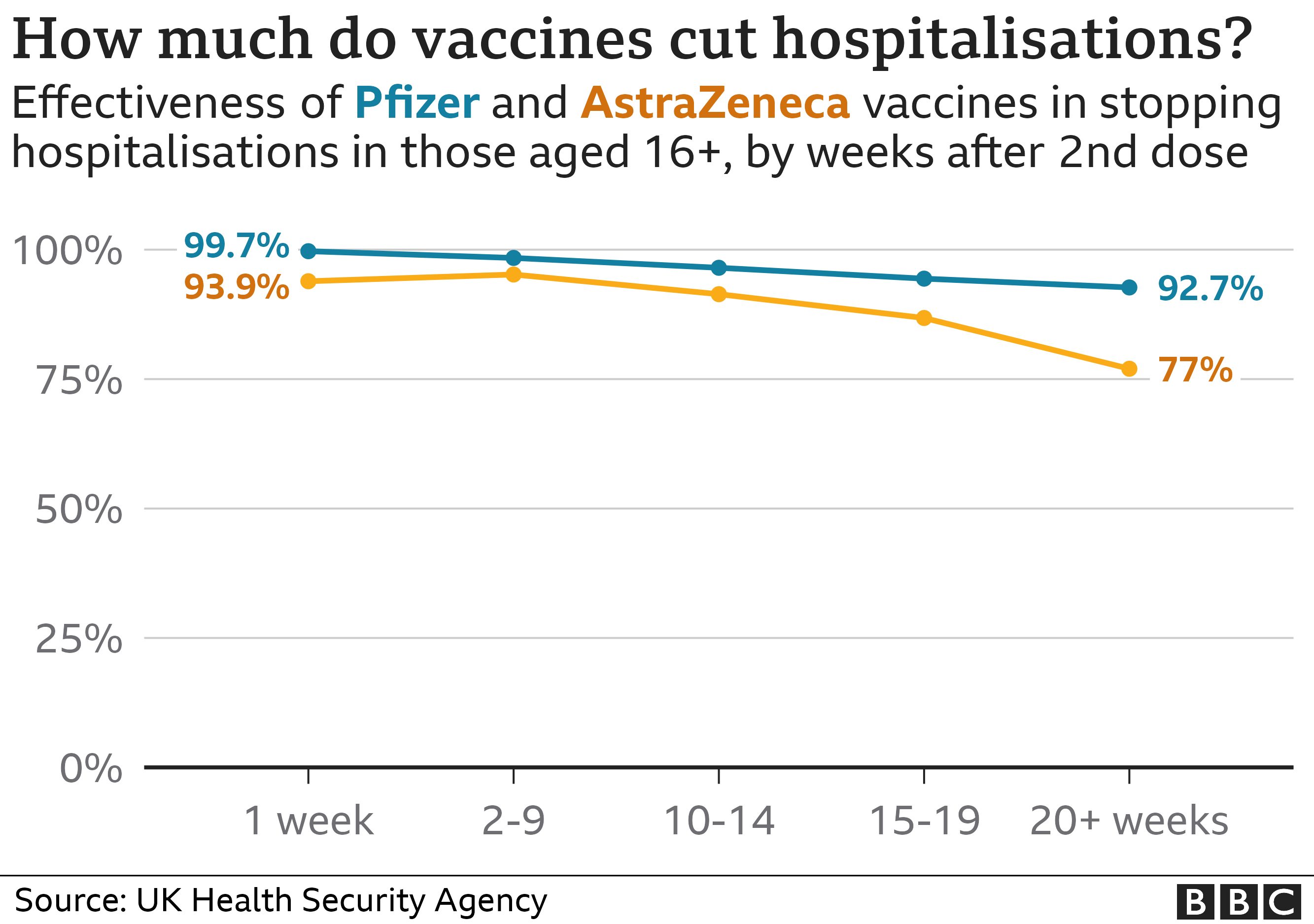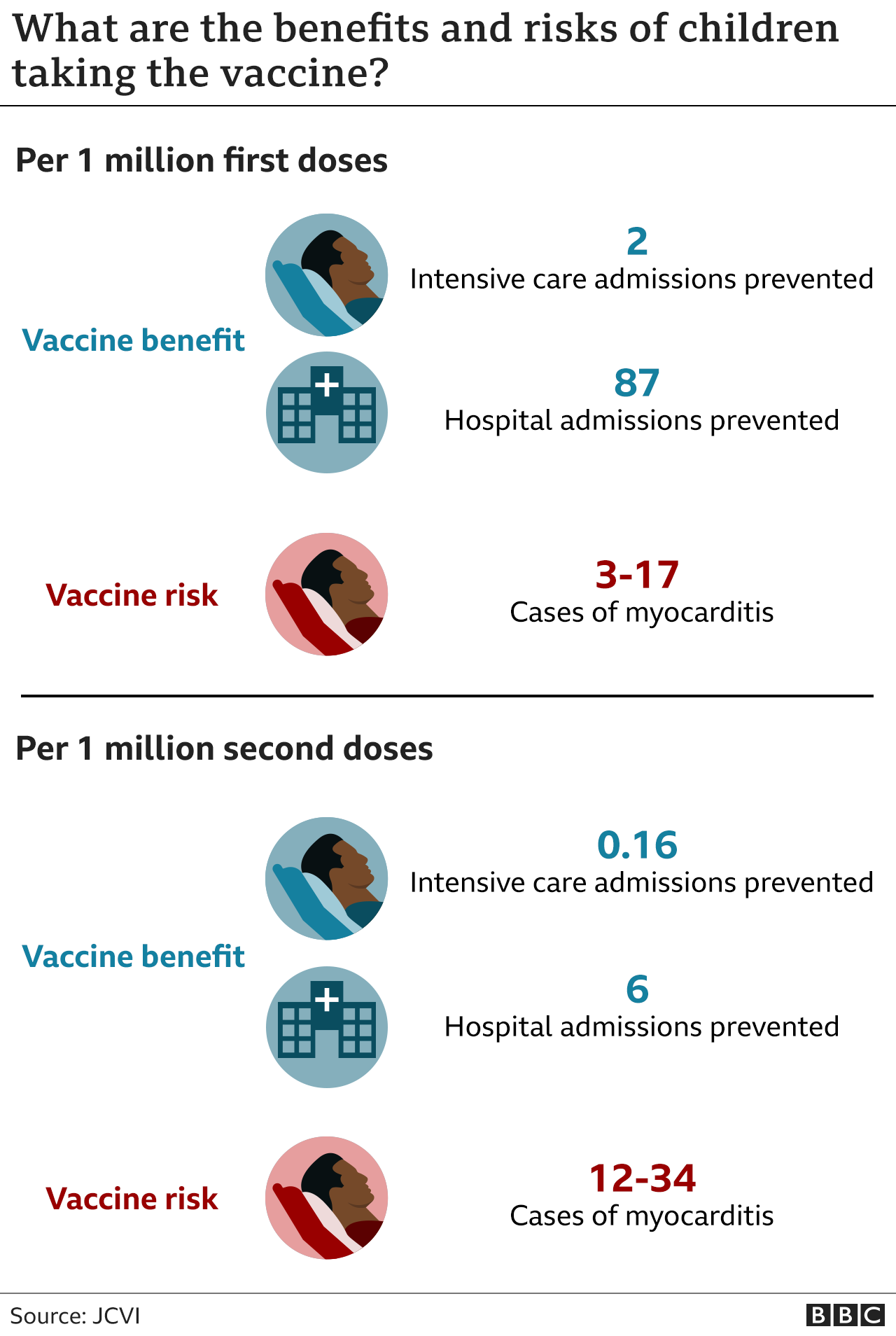Ferrari писав: ↑24 листопада 2021, 14:59
Другой вопрос, что эффективность вакцин с течением времени была недостаточно исследована, и все эти заявленные 90 и 85% превратились в тыкву менее, чем через год.
Research estimates that the AstraZeneca vaccine reduced any form of Covid symptom by 66% shortly afer the 2nd dose.
5 months later that figure had fallen to 47%.
For Pfizer, the numbers fell from 90% to 70%.
https://www.medrxiv.org/content/10.1101 ... 21263583v2

Ferrari писав: ↑24 листопада 2021, 14:59
Понадобились бустеры и ревакцинация.
бустеры/ревакцинация также понадобились для почти всех вакцин, кроме tuberculosis, yellow fever (и, в некотогрых случаях hepatitis B):
cholera 2 doses (given 1 to 6 weeks apart) can provide protection for up to 2 years
rabies Before exposure: 3 doses of the vaccine are given over a 1-month period on days 0, 7, and either 21 or 28. After exposure: 4 doses over 2 weeks
tetanus The first 2 shots are given at least four weeks apart, and the 3rd shot is given 6 to 12 months after the 2nd shot. After the initial tetanus series, booster shots are recommended every 10 years.
typhoid fever every 3-7 years. Booster vaccinations are recommended every 3 years if you continue to be at risk of infection with typhoid bacteria
diphtheria 3 doses + 3 booster doses is followed. 3 doses + 1 booster dose provides immunity for 25 years after the last dose. If only 3 doses are given, booster doses are needed every 10 years)
pertussis (whooping cough) pertussis booster for adults is combined with a tetanus vaccine and diphtheria vaccine booster; this combination is abbreviated "Tdap" (Tetanus, diphtheria, acellular pertussis) - CDC routinely recommends DTaP at 2, 4, and 6 months, at 15 through 18 months, and at 4 through 6 years
typhus Booster doses were required every 6 to 12 months. injectable vaccine requires a booster every 2 years, and the oral vaccine requires a booster every 5 years.
influenza yearly vaccination recommend
tick-borne encephalitis 2-3 doses are recommended depending on the formulation. Typically 1-3 months should occur between the first doses followed by 5-12 months before the final dose. Additional doses are then recommended every 3-5 years
polio 0.5 year ( total of 4 doses )
anthrax 0.5 year (3 doses with a booster dose after 6 months)
measles 2 doses (2nd dose should be given at least 1 month after the 1st dose)
mumps 1 booster
rubella 1 booster
pneumonia (Streptococcus pneumoniae) 4-dose series is given at 2, 4, 6 and 12–14 months of age.
meningitis (Neisseria meningitidis) The vaccine is recommended for babies aged 8 weeks, followed by a 2nd dose at 16 weeks and a booster at 1 year. 1 year after series completion and then every 2 to 3 years thereafter. studies are ongoing to determine the actual duration of immunity, and the subsequent requirement of booster vaccinations. The CDC offers recommendations regarding who should get booster vaccinations
hepatitis B 2 doses for the best protection. The initial dose of the vaccine should be followed up by a booster 6 to 12 months later (for healthcare workers, 1 single booster is recommended 5 years after initial immunization)
chicken pox 2nd dose provides the additional benefit of improved protection. 12 through 15 months old and a second dose at 4 through 6 years old.
Haemophilus influenzae type b (HiB) 2-3 doses should be given before 6 months of age; a 4th dose is recommended between 12 and 15 months of age.
Q fever eople whose work puts them in contact with high-risk animals or animal products have a high risk of getting infected with Q fever. The vaccine is strongly recommended for people aged 15 years and over who work in high-risk occupations
hepatitis A 2 doses for the best protection. The initial dose of the vaccine should be followed up by a booster 6 to 12 months later. First dose: 12 through 23 months of age. Second dose: at least 6 months after the first dose
rotavirus 2 or 3 doses more than 1 month apart should be given
human papillomavirus 3-dose program; time elapsed between the 1st and 2nd dose was 6 months and the third dose 60 months later
malaria 3 doses of vaccine plus a booster
dengue fever 2 additional shots given 6 and 12 months later
все эти вакцины тоже превратились в тыкву?
Ferrari писав: ↑24 листопада 2021, 14:59
Ну, и я продолжаю не понимать, зачем прививать в обязательном порядке детей и подростков с молодежью, но это уже другая история
Возможно, потому же (та же история), почему прививали/прививают в обязательном порядке детей и подростков с молодежью согласно календарю прививок от таких инфекций, достигнув (для большинства из них) Global vaccination coverage > 85%+ :
smallpox 80%+
tetanus 85%
tuberculosis 88%
diphtheria 85%
pertussis (whooping cough) 85%
polio 86%
measles 85%
mumps 85%
rubella 71%
pneumonia (Streptococcus pneumoniae) 48%
meningitis (Neisseria meningitidis) 350 million people in 24 out of the 26 countries in the meningitis belt
hepatitis B 85%
Haemophilus influenzae type b (HiB) 72%
human papillomavirus 13% (началось только в последнее десятилетие; As of 2017, 71 countries include it in their routine vaccinations, at least for girls)
Результаты:
оспа - ликвидирована/искоренена к 1980 году.
вакцины, почти искоренившие болезнь, либо искоренившие регионально:
- polio: wild poliovirus type 2 &3 had also been eradicated worldwide; poliovirus type 1 and circulating vaccine-derived polio circulating in a few isolated pockets, with all wild polio cases after August 2016 in Afghanistan and Pakistan.
- measles: in 2016 Americas declared it had eliminated measles. 2018: 35 countries out of 53 European countries have eliminated endemic measles. 2019: a total of 82 countries were certified to have eliminated endemic measle transmission.
- mumps: countries that have adopted mumps vaccination have seen a near-elimination of the disease
- rubella: 2015 - Americas free of rubella transmission; 2018 - Australia achieved eradication; 39 countries out of 53 European countries have eliminated endemic Rubella; 2019 - 82 countries were certified to have eliminated rubella.
вакцины, снизившие в разы (десятки раз) госпитализацию, тяжесть заболевания и смертность:
- tuberculosis - смертность снизилась с 2.7 млн в 1993г до 1.5 млн в 2018г
- diphtheria:in 2015 - 4,500 cases down from nearly 100,000 in 1980; 2,100 deaths, down from 8,000 deaths in 1990;
- pertussis: 2015 - 58,700 deaths – down from 138,000 deaths in 1990; вакцинация предотвращает заболевание, но вакцинированные люди могут оказываться носителями бактерии и способны передавать её невакцинированным, в результате чего последние всё ещё находятся под риском возникновения заболевания.
– Hepatitis B: 2018 - 70,000 deaths globally, down from 930,000 deaths in 1993.
– Tetanus: 2015 - 209,000 infections and about 59,000 deaths globally, down from 356,000 deaths in 1990.
– meningitis: 2017 - 10.6 infections and 288,000 deaths—down from 464,000 deaths in 1990;
ABC писав: ↑24 листопада 2021, 15:09
Не только Вы не понимаете, UK (наверное под нажимом общественности) рекомендует только 1 дозу
в UK изначально JCVI рекомендовало только 1 дозу, т.к.:


